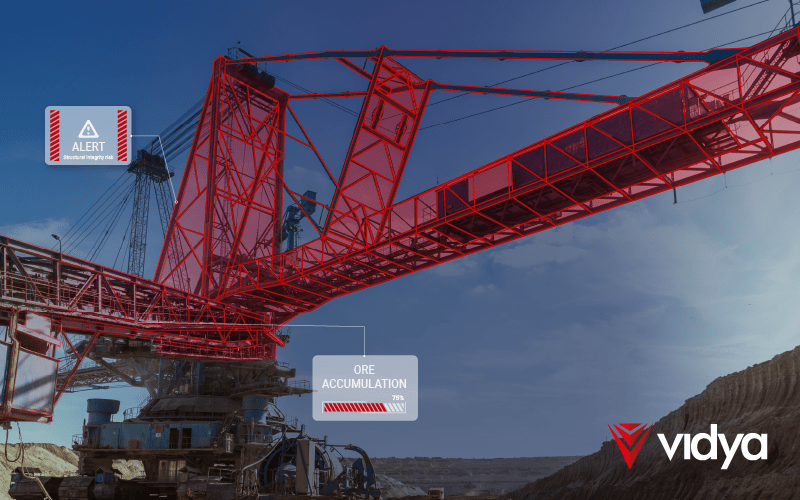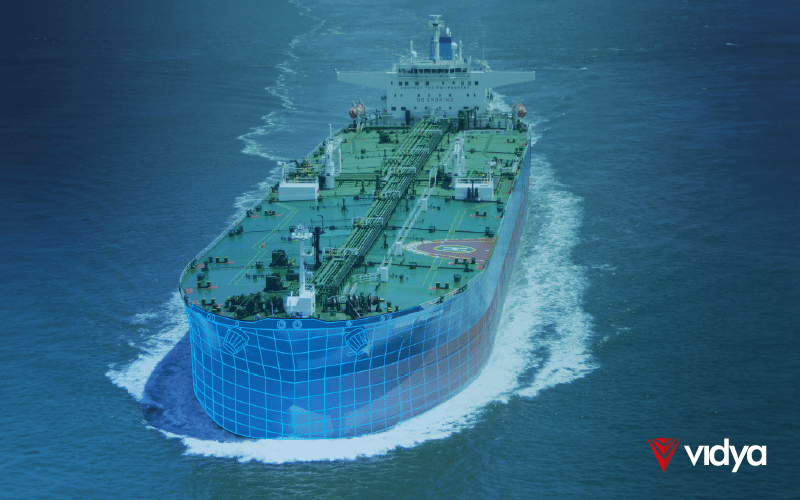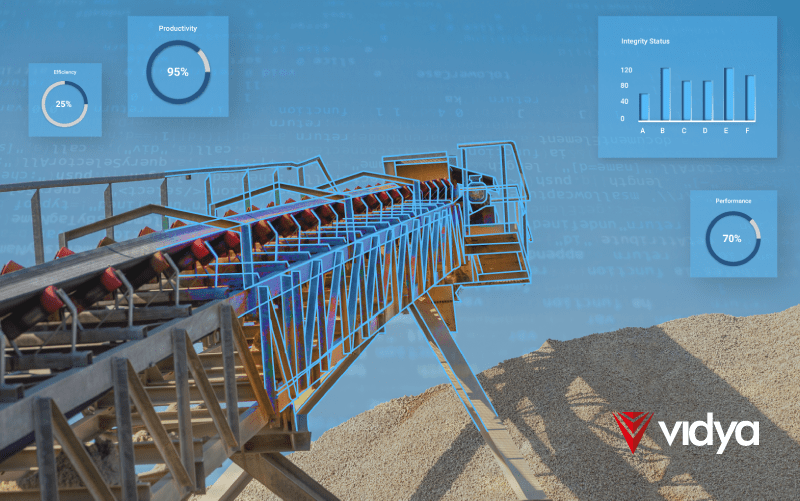Mining logistics involve managing activities related to the transportation of ore from the mine site to the ore processing plant and eventually to the final customer. In this context, this process consists of transporting large volumes of minerals for thousands of kilometers. According to McKinsey, today’s complex mining value chains are almost inevitably subject to disruption. For this reason, new strategies for streamlining mineral transportation must be developed. However, before delving into the challenges of mineral transportation, we need to understand how the whole process occurs.
The mining logistics process
Mineral transportation is embedded in the Mining value chain, encompassing all the activities from extracting minerals to delivering final products to customers. Indeed, coordinating different transport methods, managing paperwork, and complying with regulations can be complex and time-consuming. Nevertheless, the following overview represents a simplified perspective, considering that these processes vary considerably according to each industry, the specific mineral, its origin, and its intended use.
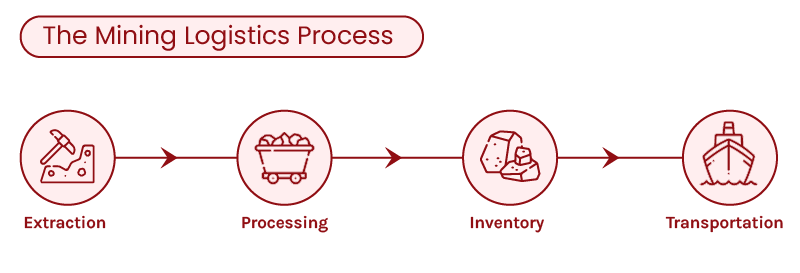
1. Extraction:
Extraction consists of removing the mineral from its natural environment. In this regard, large amounts of earth and rock are moved to extract valuable minerals through surface methods such as open-pit mining, where hard rock must be drilled and blasted to extract the intended minerals. Or subsurface techniques like underground mining, where the rock is drilled and blasted, then moved to the surface by truck, belt conveyor, or elevator.
2. Processing:
Processing minerals involves transforming raw materials into valuable products through several key stages. Initially, the ore is crushed and ground to reduce its size, followed by sorting and classification to separate valuable minerals from waste material. Mineral separation techniques such as flotation or gravity concentration are then employed to extract the desired minerals, which are subsequently concentrated to increase their purity and quality. Then, dewatering and tailings management are necessary to remove excess moisture and properly handle waste material. For certain minerals, smelting and refining processes are used to extract metals and purify them to meet quality standards. After this phase, processed materials must be stored.
3. Inventory:
Storing minerals isn’t as simple as it seems. Chemical composition, particle size, and density all influence storage choices. For example, moisture-sensitive minerals need controlled environments, while dust-producing ones require ventilation. According to the article ‘’An Overview of the Status and Challenges of CO2 Storage in Minerals and Geological Formations’’, choosing the right containers, conveyor belts, and loading equipment depends on the specific mineral and desired efficiency. With adequate storage, the materials can be transported.
4. Transportation:
Minerals travel through various modes like trucks, trains, ships, and conveyor belts, integrating all methods in the same value chain. This is the most crucial step of mining logistics, considering it can be allocated in between any of the previous phases. Indeed, companies often display their extraction, processing, and storage facilities far from each other, requiring the transportation of tons of ores for thousands of kilometers.
In this phase, several assets serve as transportation modes for different purposes. For instance, conveyor belts consist of mile-long belt systems used to transport ore seamlessly within facilities such as storage and ports. Other assets like ship loaders load minerals onto vessels, facilitating the carrying of high volumes of minerals into offshore units like bulk carriers.
Additionally, bulk carriers allow the moving of substantial amounts of raw materials from ports to distant facilities and ultimately to markets worldwide. Certainly, while these structures allow industries to perform harsh activities, they still present several integrity improvement points. Yet, we have to look at the challenges of mineral transportation to fully understand how to optimize the Integrity of this complex value chain.
Challenges of transporting minerals for industries
Mineral transportation is a complex and multifaceted activity with hundreds of professionals involved. In this context, mining operations often involve transporting minerals over long distances, sometimes through difficult terrains such as mountains, deserts, or jungles. These conditions can increase transportation costs and safety risks. For this reason, industries are subject to various regulations regarding safety, environmental protection, and land use that restrict heavy investments in optimizations.
According to a Cambridge University report, shipping the mining output is an expensive and in most cases, an unavoidable component of the mining process. In this sense, any kind of efficiency improvement in this complex value chain might have a large impact on cost savings. Thus, mining industries need new methods of monitoring and tracking crucial information within their logistical scope.
Beyond that, stress and overload expose transportation assets to structural damage, possibly leading to equipment failure, mineral spillage, and decreased capacity. For instance, overloaded conveyor belts can generate belt tears, spillage, and damage to supporting structures. Likewise, corroded bulk carrier hulls weaken the vessel, increasing the risk of leaks and sinking.
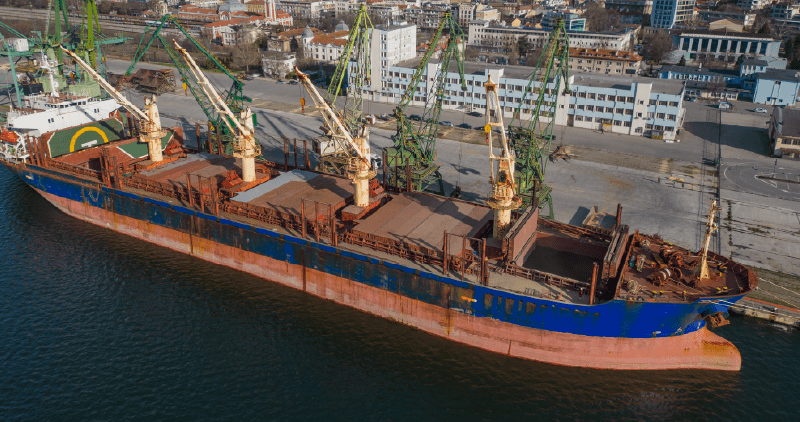
In this volatile environment, reliability emerges as a critical necessity for industries, given that transporting conditions are often untraceable. In this context, it becomes imperative to ensure safe and efficient transportation. Furthermore, the advent of new methods such as AI serves to both safeguard and optimize logistics, providing the needed assurance in an uncertain landscape.
Protecting mining transportation with AI
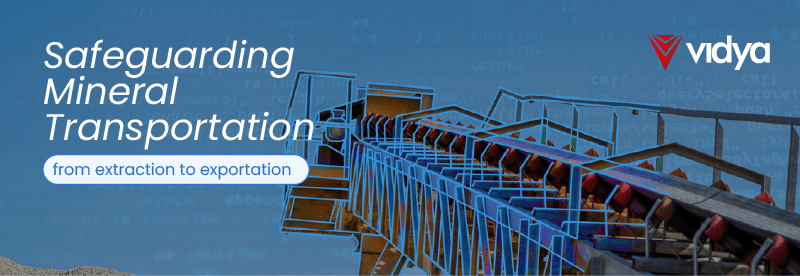
Mining logistics are inherently challenging activities that have a limited margin for optimization. To solve these challenges, Vidya Technology – an international Deeptech specialized in AI software with hardware and engineering experience – developed a digital platform solution to the specific challenges of transporting minerals. Vidya’s solutions safeguard mineral transportation from extraction to exportation with the Digital Structural Integrity (DSI) application for conveyors, shiploaders, stack reclaimers, and the Digital Hull Tracking (DHT) application for bulk carriers’ hulls.
Digital Structural Integrity [DSI]
The Digital Structural Integrity application autonomously identifies structural anomalies in mining assets. It integrates Artificial Intelligence, 3D environments, and Reality Capture to transform field images into valuable structural integrity outputs, including risk and prioritization matrix heatmaps. Additionally, the system performs effectively even in environments characterized by substantial dirtiness. It also analyzes, marks, and identifies structural anomalies and corrosion while strictly adhering to the company’s inspection standards.
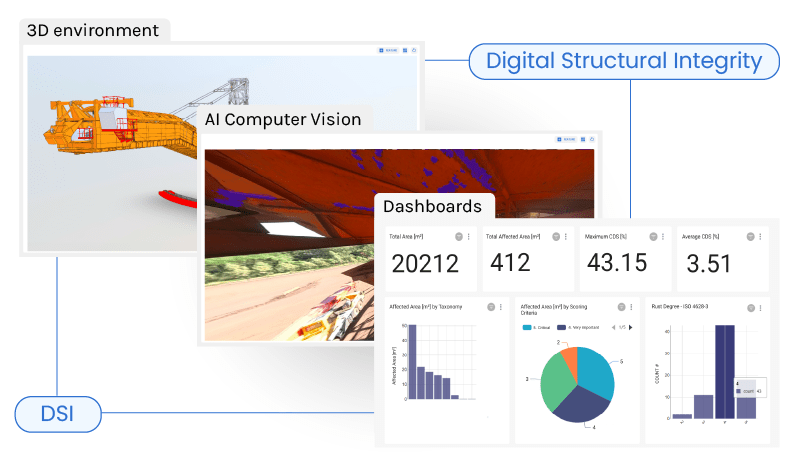
Digital Hull Integrity [DHT]
Vidya’s Hull Integrity solution is crucial in enhancing bulk carrier integrity. Besides these facilities being inherently exposed to liquefaction, they face hull anomalies such as corrosion, pitting, welding, and other discontinuities. For this purpose, The Digital Hull Tracking application combines reality capture via drone images in a 3D environment with AI to view, locate, classify, and quantify potential discontinuities, pitting, and critical corrosion points. As a result, the application provides a digital and visual management system for hull inspection, with anomalies mapped and classified with maintenance action support and generating integrity notations in less than 30 days.
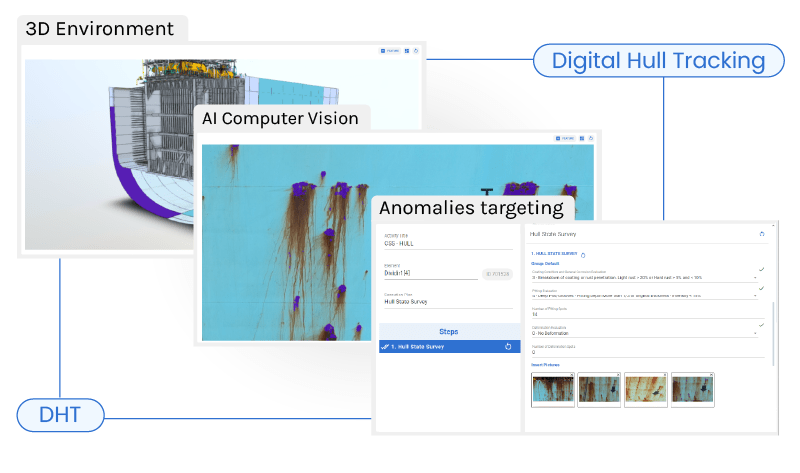
Conclusion
As mining operations continue to evolve and expand into increasingly remote and challenging environments, the role of AI in protecting transportation assets becomes crucial. As previously seen, the complex mining value chain presents several improvement points that can be leveraged by synergizing human-AI collaboration with Vidya’s solutions. Vidya’s applications target more than just identifying anomalies, complementing and empowering, not replacing, the incredible skills and knowledge of our users.
